Tools Every Pickup Owner Should Have
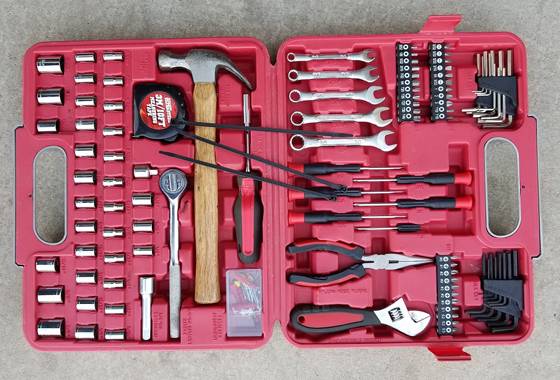
Owning a pickup truck provides opportunities as well as responsibilities that don’t exist if you own a smaller vehicle. Towing trailers, driving rougher roads, moving couches and hauling dirty, stinky items that aren’t wanted inside of a vehicle are all things you can do with a pickup truck. Being able to do those things means you’ll need extra tools to accomplish them safely.
Here are some suggestions for the gear you need when you’re on the go.
Safety First
All commercial vehicles are required by the U.S. Department of Transportation to have three things: a properly rated dry fire extinguisher, three safety flares or triangles, and spare fuses. It’s a good idea to have these items in any vehicle, not just commercial ones.
We recommend having an ABC-rated fire extinguisher rather than a BC-rated extinguisher and using the triangles instead of flares. A-rated fire extinguishers put out wood, paper, cloth and plastic fires; B-rated extinguishers are for fluids such as oil, gasoline and diesel fuel; and C-rated extinguishers are for electrical fires. For vehicle use, having one extinguisher that works for all three types of fires is the best way to go.
We recommend safety triangles over flares because flares can burn out in 10 to 30 minutes and can go bad over time. Safety triangles are larger and harder to store, but they work indefinitely as long as they aren’t broken.
In addition to these safety items, every vehicle should carry a basic first-aid kit. Finally, a stored pair of sturdy gloves will allow you to touch hot items without burning your hands and protect your hands from getting cut while wrenching.
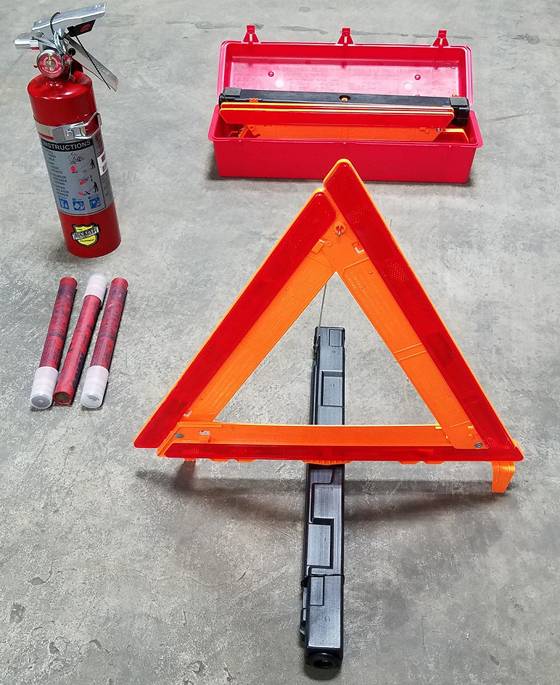
Tools for Your Truck
You never know when you’ll need a tool, so keeping an easily accessible toolkit in your pickup is a good idea. We recommend the toolkit include electrical tape, a socket set, pliers, wire strippers, screw drivers, zip ties, duct tape, an air pressure gauge and combination wrenches. Having these tools will allow you to make temporary fixes when on the road, which will hopefully last until a safe place with the proper equipment can be reached. A cheap kit is better than no kit at all, so if money is tight, pick up a $30 kit at a discount store.
That said, pickups are taller, longer and wider than most cars. They also have larger hardware, meaning that investing in a large set of combination wrenches and sockets is probably a good idea. Furthermore, towing a trailer also can require larger tools for both the trailer and for a weight-distributing hitch, if so equipped. Having wrenches and sockets that go up to 1 1/2 inches can be a life saver if a suspension nut on the truck or head bolt on the trailer hitch comes loose.
Flashlights are invaluable for working in the dark. Many cellphones have a flashlight incorporated, but it’s also a good idea to have one stored in the truck. Another great tool for a pickup truck is a folding shovel. This can be used for digging the vehicle out when it’s stuck, building a fire ring, clearing a tent site of rocks, digging a toilet and many other things. They are cheap, small and easy to store and use. Likewise, jumper cables or a boxed jump-starter are both excellent tools to have on hand. Many portable jump-starters also have an air compressor built into them, just in case you need to inflate a tire.
Finally, having these tools allows you to help other people in need. Be aware that a powerful jump-starter is required to start a diesel engine and keeping all these tools on board will add extra weight.

Tools for Your Garage
We could cover every tool a mechanic’s shop would have, but that’s not realistic. So we’re recommending tools that don’t need to be in the truck, but they’ll make doing your own maintenance easier.
Floor jacks and jack stands are great for lifting and safely supporting the vehicle while it’s being worked on. Using the factory-supplied jack works in a pinch, but it takes a lot of time and can only hold up one wheel at a time. With a floor jack and jack stands, two wheels can be safely removed, and it can be done more quickly than by using the factory jack.
Ramps are useful for oil and oil filter, transmission filter and fluid changes, and for whenever more clearance is needed to work underneath the pickup. Also, a torque wrench is great for tightening bolts to the proper load.
Beyond these tools, there are many others that will make jobs easier such as air ratchets, impact guns and specialty tools. However, they aren’t necessary for most at-home repairs. They can be rented at parts stores should you need them.
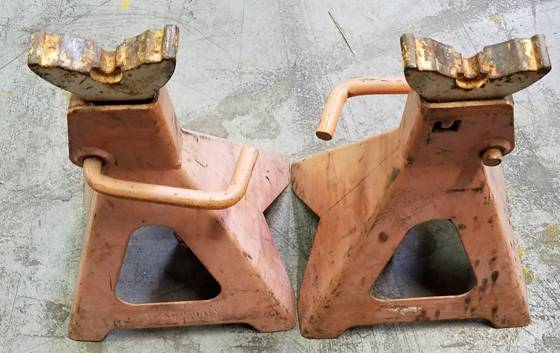
For Cargo and Vehicle Recovery
If you frequently haul cargo or tow a trailer with your pickup, there are a few tools you should keep in the truck.
Those who carry cargo in a pickup bed should have a four-pack of 1-inch-wide ratcheting tie-downs for securing loads. Those who pull trailers with heavier cargo might need larger and longer 2-inch, 3-inch or even 4-inch-wide tie-down straps. A small-diameter rope that’s 20 to 30 feet long is versatile and can be stored under the rear seats or in a door pocket.
Additionally, tow straps can be used for vehicle recovery and for towing short distances to move a vehicle out of a dangerous position, such as the shoulder of a freeway, to a safer location. Ropes are also significantly lighter and easier to handle than towing chains, but they aren’t as abrasion-resistant. Some tow straps have hooks on the ends, while others may only have loops. For the tow straps with loops, it is a good idea to have a set of heavy-duty shackles to make it easy to securely connect to the vehicle(s).
If there’s a good chance that the truck will be driven in snowy, icy or muddy conditions, then tire chains might be something to keep in the truck, too. It might be a seasonal thing, but having a set of at least two tire chains will make winter driving much safer and can prevent your truck from getting stuck in deep snow or mud.
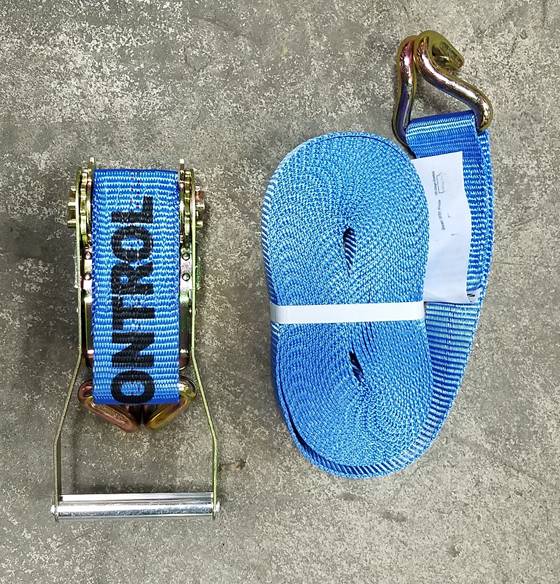
Storage
There are a variety of ways to store tools and equipment in a pickup truck or SUV. Tool roll-up packaging, usually made of heavy canvas or nylon, is a good way to store tools. Tool rolls generally have separate pockets for each tool, which keeps them from rattling. When rolled up, they are compact and easy to move and store. Toolboxes, although larger, can protect fragile tools, such as a multimeter, and keep the tools organized. They might take up more room than a tool roll, but having a hard shell allows them to be stacked or stored in an area that might take small impacts.
Truck-bed toolboxes can provide a lot of storage space, but they also take up valuable space in the bed of the truck. There is usually enough room inside a truck for all the equipment listed above, underneath and/or behind the seats.
Keeping this equipment in a vehicle takes up space that might be otherwise used for luggage, construction materials, life jackets or other items, but when there’s an emergency, they are indispensable.
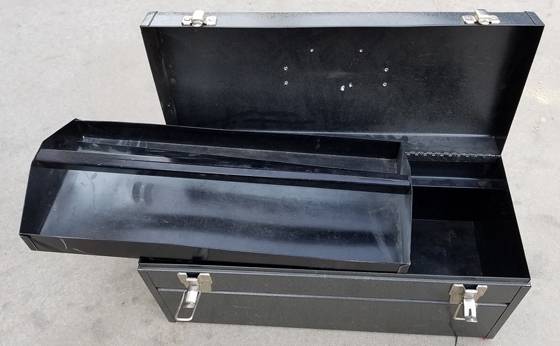
Final Thoughts
Purchasing these items at once can be overwhelming and costly. Start small, picking up a tool here and a first-aid kit there, until you have a full emergency kit built up. Eventually one or many of the tools will be used to help yourself or someone else get out of tight spot.
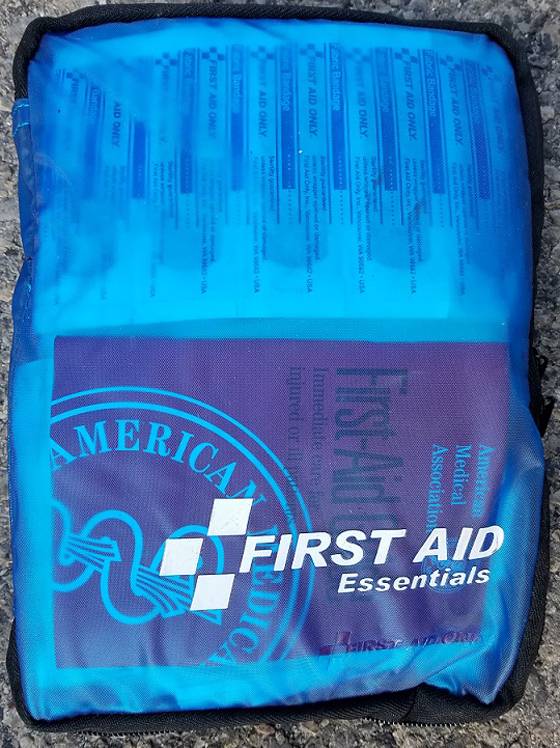
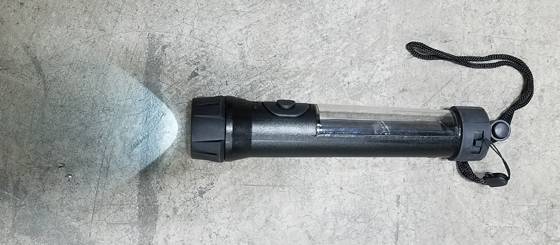
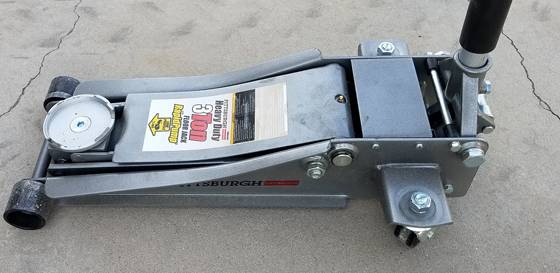
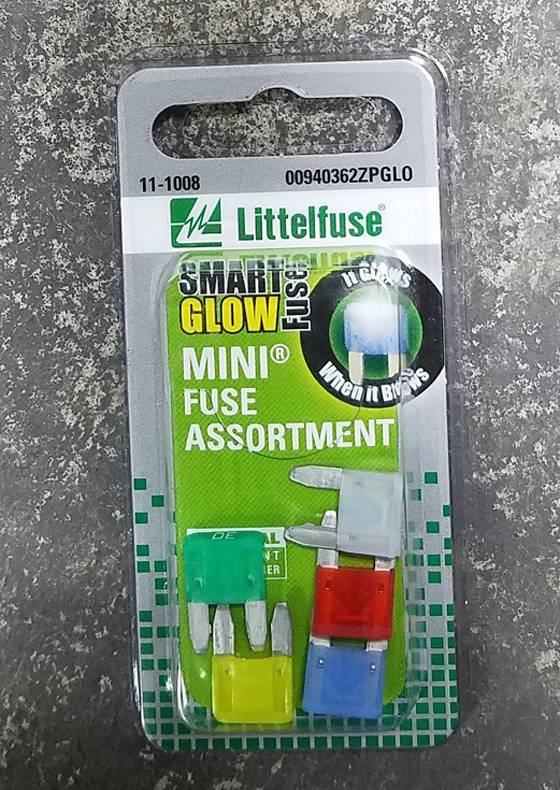
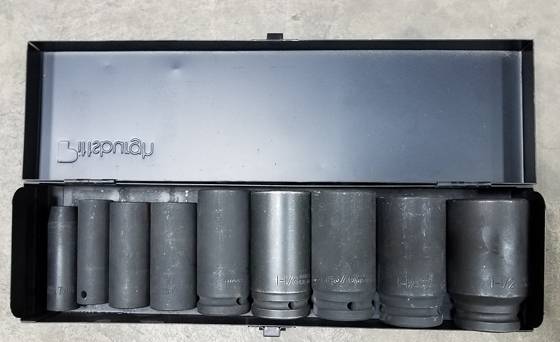
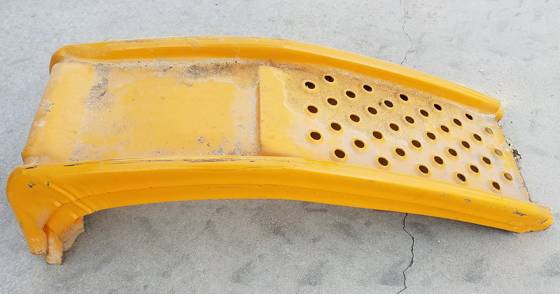
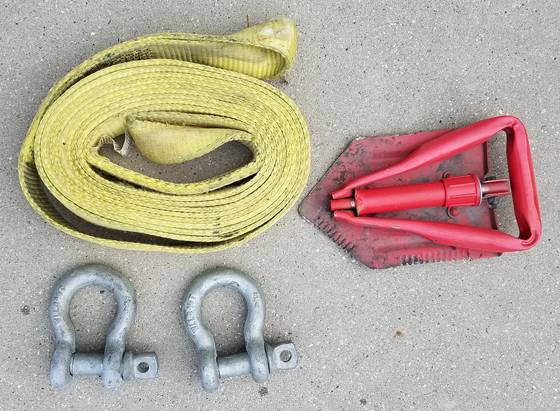
Cars.com’s Editorial department is your source for automotive news and reviews. In line with Cars.com’s long-standing ethics policy, editors and reviewers don’t accept gifts or free trips from automakers. The Editorial department is independent of Cars.com’s advertising, sales and sponsored content departments.
Featured stories




